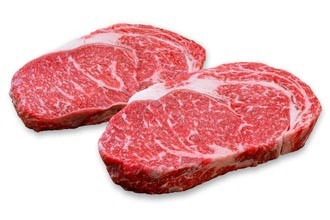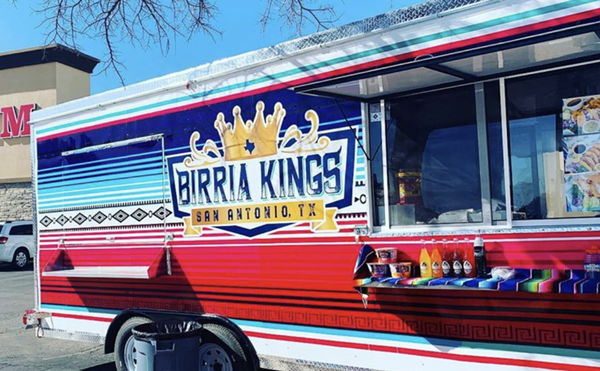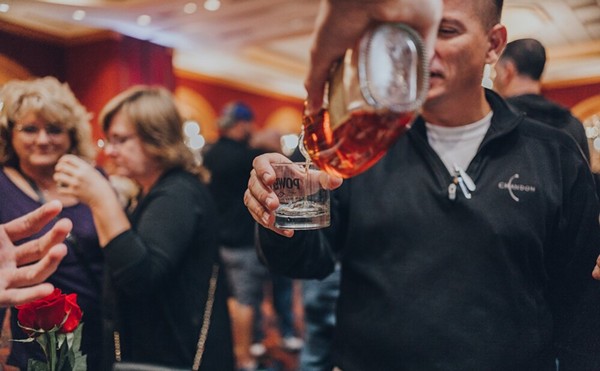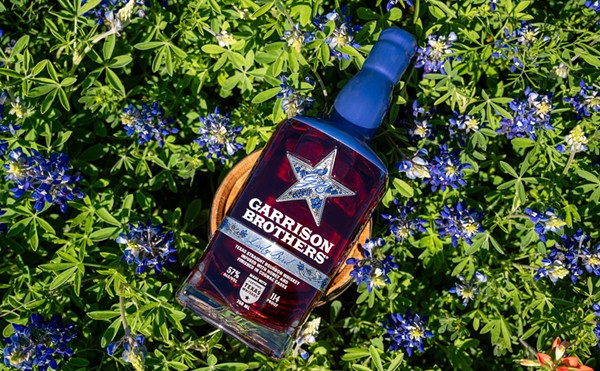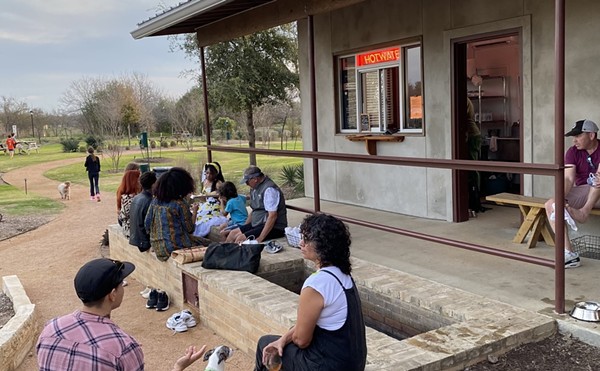Texas gets over on Japan
Texas is the only place outside of Japan where Akaushi cattle roam. Originally from the Mount Aso region of Japan (home of San Antonio’s Sister City, Kumamoto), Akaushi are considered a Japanese National Treasure and a protected breed. Akaushi may not leave Japan, even as steaks. That was, until a group of wily South Texas businessmen took advantage of a tiny (and quickly closed) loophole in a 1992 trade act, and brought home eight Akaushi cows and three bulls in 1994. Now more than 5,000 head of Akaushi graze the grasslands near Yoakum and Gonzales in East Texas. HeartBrand Beef, the partnership that owns the herd and processes the meat, keeps a tight rein on the animals. As in Japan, at this point no Akaushi may leave South Texas on four hooves — and the steaks can only be purchased on the internet.
Protecting the breed
Dr. Jose Antonio Elias Calles, president of HeartBrand Beef, holds a doctorate in genetics and one in Japanese beef. Really, you can get a Ph.D. in Japanese beef. As the foremost authority on Akaushi outside of Japan, Calles can often be caught gushing about the breed. “They’re 100-percent pure. They’ve never been mixed with any other breed. We can trace the breeding information back many, many generations. Master geneticists and scientists have selected every Akaushi dam and sire for the last 60 years and have data to back up every choice.” Bragging, perhaps — but Calles is anything but all hat and no cattle.
A significant difference in his cattle is that there has been just one owner/one caretaker for all Akaushi, explains Calles. “Because we have all of the breeding information for every animal here, and can go back for years in Japan as well, we can ensure the quality of the meat for future generations,” he says. “To date, there has never been a cross-breeding of Akaushi. We keep only 1 percent of the bulls for breeding, based on their individual confirmation plus the growth patterns and confirmation of their offspring. So we know what we’ll get every time we breed.”
Dr. Calles oversees every moment of every member of the herd’s life, from conception to kitchen. The DNA of each animal can be traced
| KOBE SCHMOBE Kobe beef imported from Japan has been banned in the U.S. since 2001 (the Mad-Cow scare). If you’re ordering “Kobe” in a U.S. restaurant, you’re getting “American-style Kobe Beef” as approved by the USDA, though chefs can call it anything they like. It’s usually from cattle that are of 50-percent Japanese Wagyu origin and 50-percent American Black Angus. The term “Kobe” has come to simply mean that the meat is highly marbled for a richer flavor. Those who raise American-style Kobe cattle don’t undertake the rituals often associated with the name: There’s no massaging, no sake, and no classical music in these bovines’ lives, although most are “finished” on special grain feed for at least 350 days. |
In fact, it’s the quality of the meat that led to the Akaushi breed in the first place. For decades, Japanese cattle were beasts of burden first, and milk/meat supplies second. But the demand for beef in Japan grew. So the Japanese government began to focus on improving the food production of their cattle. They imported two breeds from Switzerland and England, Simmental and Devon, and began to selectively crossbreed them with their indigenous (Wagyu) breeds. Calendar pages turned, seasons came and went, then badda bing, badda boom, Akaushi cattle became an officially recognized and registered breed in 1944. By 1974, those nitpicky scientists of Kumamoto Prefecture had established carefully controlled breeding programs to produce more delicious-tasting beef than ever before. Little did they know, they were also creating healthier beef.
Slimming down by beefing up
Rationally, you probably think that healthier beef would be leaner beef. After all, we’ve been told that a healthy diet can include beef — but only if we eat the leanest cuts and remove all traces of visible fat (and where’s the fun in that?). Not so with Akaushi. First of all, Akaushi is the only meat of any kind that contains Oleic acid, the beneficial monounsaturated fat that’s in olive oil. The extremely marbled meat is lower in saturated fat and cholesterol and higher in monounsaturated fat and Conjugated Linoleic Acid (CLA) than any other beef on the planet. Researchers say CLA, which appears naturally in small amounts in all beef, lamb, dairy products, poultry, and eggs, may fight diabetes,
prevent the onset of certain cancers, reduce body fat, lower cholesterol, reduce the risk of heart disease, regulate bone loss, and increase muscle tissue.
There’s plenty of science to back up the HeartBrand claims. In a USDA nutritional analysis, Akaushi beef was proven to be considerably lower in cholesterol than other beef: 10.4 miligrams in 2 ounces of raw 80-percent lean Akaushi vs. 35 milligrams in the same amount of 95-percent lean regular ground beef. Sure, you say, but what about comparing it to other proteins? OK: There are 32 milligrams of cholesterol in 2 ounces of chicken breast, 39 milligrams in buffalo, 36 milligrams in turkey, and 28 milligrams in tilapia. This beef has half the cholesterol of fish.
Nature vs. nurture
There’s certainly a diet plan for the Akaushi cattle. A strict one. Every morsel of food and every drop of water they ingest is under Calles’s control. This is important to the HeartBrand claims of “100-percent all natural and hormone free.” It’s also critical to flavor. With the healthy composition of the beef’s fat being purely hereditary, the correct feeding regimen simply seals the deal. “We plant a special mix of grasses that the cattle graze on, and we control the independent water source they drink from,” Calles explains as we tour one of the ranches. Happy cattle herd together, lazily munching as they grow. “At a target weight of 1,000 pounds, we move them to a feed lot where they’re fed a special formula — again without growth hormones or antibiotics.” This feeding finish lasts from 285-360 days, until steers tip the scales at an average goal weight of 1,750 pounds.
The Kobe beef mystique has given Americans a fairytale-like view of the pampering that fine beef requires, albeit with many misconceptions. Because they’re always confined, much of the pampering, like the legendary sake massages, keeps the cattle healthy, pain-free, and calm. As it turns out, Akaushi in Japan get royal treatment, too. Due to space limitations in the country they are treated to full indoor housing, twice the size of standards set for stalling American cattle. Their bedding is a thick and intricately layered mix of rock, sand, and straw. They live in specially placed barns, receive additional light when there’s not enough sun, and listen to classical music. “It’s been shown that classical music reduces stress by 27 percent,” explains Calles. “And a reduction in stress creates better-tasting meat.” The cattle-to-caretaker ratio is 1:1 in Japan.
In Texas, Akaushi cattle graze on grass in the fresh air, then finish on an epicurean grain gumbo in their own large space — also twice what most other American cattle face. “The larger space reduces stress on the animals because they have more room to move and the pens can be kept cleaner. So there’s less contamination and it’s more free of bacteria,” says Calles. “We don’t add antibiotics or hormones to the feed or water, and we have very, very healthy animals.” There’s no music, but Texas Akaushi would probably want country instead of classical anyway.
Grill of my dreams
During my Yoakum adventure to HeartBrand, Calles took me to the local Dairy Treet, a little burger joint in a nearby strip center that serves Akaushi and other burgers side by side. The Akaushi burger tasted pretty good, despite being overcooked, but I realized I had nothing to compare it to.
I plunked down a chunk of change and brought home some frozen Akaushi steaks, sausages, and ground meat so I could do a taste test. I’ll admit, I wasn’t thrilled at the prospect of frozen meat. My face must have shown my disappointment because Calles immediately addressed my fears. “The Oleic acid makes the meat much more stable through freezing to the table,” he said. “And the CLA also helps extend the meat.” He also warned me that the fat has a lower melting point, so the meat cooks faster and should be cooked at a lower temperature.
The first taste test wasn’t a fair fight. Annie and Brian, my foodie neighbors deluxe, brought a Choice grade ribeye to pit against the Akaushi ribeye and sirloin strip. We all laughed at our mistake. The ribeye we’ve been buying for years, and that we considered serviceable, tasted flat compared to the Akaushi.
My second “beef-off” pitted Akaushi against widely available “better” steaks: Ribeyes from Omaha Steaks, an H-E-B Prime Angus ribeye, an H-E-B Natural Choice Angus ribeye (no hormones, antibiotics, or additives) and an organic, grass-fed ribeye from the Longhorn Cross cattle of Sabinal-based Shudde Ranch. Finally, a fair fight with six friends waiting to get their licks in.
Our “Ribeye Throwdown” had a few rules: We added no seasonings to the steaks; all steaks were cooked to rare/medium rare; and each was placed on its own platter to reduce cross-flavors from natural juices. We took a fresh cut from each sample, in a row, to make sure we were comparing each against the other.
The Omaha ribeye, a brand with a long-held reputation for “great” steaks, disappointed each of us and was dead last in flavor and texture. “Chewy — and for what?” commented one panelist.
The H-E-B Natural Choice ribeye took on the grilled flavor and was tasty and tender. The H-E-B Prime steak was more tender than the Choice, with a slightly richer flavor, but is it worth the $3/pound differential over its sister H-E-B Natural steak? The Natural also had the edge because of its healthier upbringing.
The Shudde steak had the earthiest flavor, with a strong beef taste and lean appearance. It was less marbled than the other steaks, but was just as tender as the Natural Choice. Plus, we appreciated the fact that it’s from a sustainable local ranch.
The Akaushi was declared “buttery and tender” by every taster, with no lingering fatty aftertaste. There really was no comparison in flavor: Akaushi had the most robust taste of real beef without a gamey undertone. “Every bite makes my mouth water,” said one taster. “None of the others have come close to doing that.”
Akaushi is an exclusive treat. It’s available to the public only online at HeartBrandBeef.com and is served in just 10 restaurants nationwide (including Bohanan’s right here in San Antonio). It’s expensive, too. A single 14-ounce ribeye is $50 ($56/lb.). But a pound of ground beef is only $3 and sausages and franks are just $3.50/lb. So maybe you can afford Calles’ 6-ounces/day Akaushi health regimen. At the very least you shouldn’t die of high cholesterol trying — and what a deliciously decadent experiment it would be.

